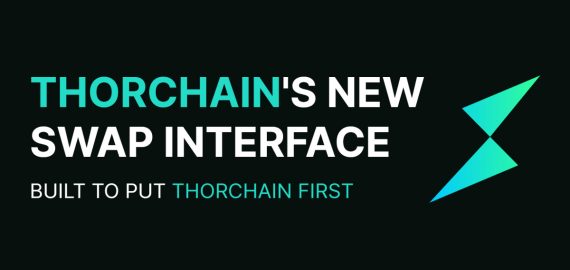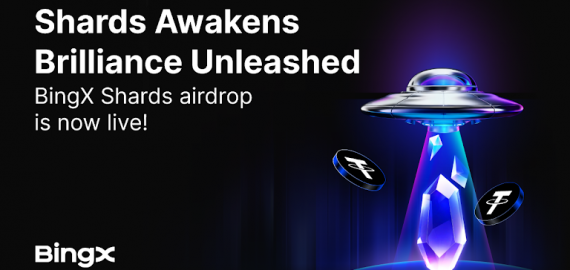DePIN-EdgeAI Synergy Will Transform People’s Digital Lives: Rock Zhang, Founder of Network3


The AI industry suffers from monopolistic control of centralized companies, adversely affecting startups and general users. However, web3 technologies like DePIN can intervene and democratize the AI sector.
In this session, we talked to Rock Zhang, Founder of Network3, about DePIN’s relevance in the AI industry, EdgeAI, and the collaborative potential between these technologies.
Q. Hello. Would you please introduce yourself and share your professional journey with our readers?
Hi, I’m Rock and it’s great to be here. I’m the Founder of Network3, an AI Layer2 that leverages DePIN to help AI developers inference, train and validate models at scale.
I’m also the Founder of Rock TechX, a platform that empowers people’s digital lives to become more secure. Before that, I was a Lead Product Manager at iHealth Labs, socialbook.io and Anchorfree and 360.
My academic background is in Science and Business, having studied at the Beijing Institute of Technology, Tsinghua University, Beihang University, National University of Singapore, and the Standford University Graduate School of Business.
As an entrepreneur and tech leader, I’m passionate about decentralized technologies and the AI industry. However, I’ve found that centralized corporations dominate the AI sector, creating privacy and unfairness issues for users and entry barriers for startups.
With Network3, I’ve attempted to create a level playing field by building an AI Layer2 network for the AI industry. I believe combining DePIN and AI will enable the training of tiny models using simple and idle edge devices to democratize the AI domain.
Q. Before we focus on Network3, can you explain the relevance of DePIN in general and the AI industry in particular?
Decentralized Physical Infrastructure Networks (DePINs) enable users to contribute and maintain material architecture in exchange for tokenized incentives.
Usually, big companies control infrastructure management because it’s a capital-intensive process with multiple logistical hurdles. However, DePIN extends the Infrastructural Sharing Economy through collective ownership, distributed costs, and decentralized security.
DePINs require physical infrastructure and middleware for off-chain computing to process and analyze real-world data. This is where I think DePINs can contribute to the AI industry.
Currently, a few companies have monopolized AI development by controlling vast data pools and cloud computing resources. Consequently, startups require huge capital expenditures to operate AI models or access shared data. Users also compromise on data sovereignty and privacy without any financial gains.
DePINs decentralize the AI sector by distributing data processing across multiple devices at the network’s edge. Thus, DePINs can directly contribute to EdgeAI and expand its possibilities.
Q. From what we know, EdgeAI is a relatively new advancement in the AI field and somewhat different from traditional AI models. How does EdgeAI work, especially with DePIN?
EdgeAI deploys AI algorithms and models on smartphones and home-based Internet of Things (IoT) devices. It doesn’t depend on centralized cloud data processing and analyzes data locally on individual devices.
Since EdgeAI processes data on devices at the network’s edge, it reduces latency, increases speed, and improves response time. It further reduces bandwidth usage, enhances scalability, and provides more security and privacy against data breaches.
DePIN and EdgeAI work together by leveraging IoT devices as they simultaneously provide computational power and direct access to data sets. These private and valuable data can be processed on the device locally without sending it to cloud servers, ensuring better privacy.
As local data becomes available for training AI models on edge devices, it speeds up Machine Learning (ML) processes. Moreover, it improves the accuracy of AI models by using real-time, localized data entries.
DePIN also ensures tokenized incentives to encourage device owners to share processing power and personal data. The incentivization model promotes active user participation and resource availability across geographical borders and demographic groups.
At Network3, we enable AI algorithms to work directly on edge devices, bringing DePIN and AI together.
Q. Tell us more about your company, Network3. How does it merge DePIN and AI to help developers and users?
Network3 is an AI Layer2 that provides services to AI developers globally. Our protocol enables users to contribute to AI training by sharing internet bandwidth, IP address, data sets, and a device’s computing power in exchange for token rewards.
Thus, Network3 does two things simultaneously. First, it turns users’ smart devices into value-generating physical assets that bring ongoing passive income. Second, it lowers startups’ entry barriers in the AI domain by facilitating equitable resource sharing within our network.
Network3 combines privacy computing, edge computing, and federated learning to train AI models.
Privacy computation occurs through the Certificateless Signcryption (CLSC) algorithm that provides encryption and signature to ensure data confidentiality. Moreover, our data correctness verification mechanism prevents the transmission of counterfeit data.
Network3’s edge computing leverages edge servers that offload computationally-intensive tasks from terminal devices like phones to improve our operational performance. Finally, our federal learning uses a local-global mechanism, proof-of-contribution, and an incentive structure to promote a participatory ecosystem.
I’m also happy to share that Network3 has recently partnered with Jambo Phone, a web3 mobile device. This collaboration will make Network3 apps available on Jambo, enabling users in emerging countries to participate in the DePIN-EdgeAI space.
Q. What do you think about the future of DePIN and EdgeAI? How will these technologies impact us?
I believe that the DePIN-EdgeAI synergy has the potential to radically transform our digital lives. It will encourage both AI-based startups and internet users to collaborate and work towards building a humane and intelligent tech-driven future.
If you look at the Messari report in early 2023, the DePIN sector’s addressable market is projected to reach approximately $3.5 trillion by 2028. Similarly, the EdgeAI market size is expected to grow to more than $186 billion by 2032.
Thus, we’ve data-driven market insights to rightfully claim that the future is bright for DePIN-EdgeAI collaborative ventures. We just need the right tools to tap into this emerging market and make the most out of it.
Disclaimer
In line with the Trust Project guidelines, please note that the information provided on this page is not intended to be and should not be interpreted as legal, tax, investment, financial, or any other form of advice. It is important to only invest what you can afford to lose and to seek independent financial advice if you have any doubts. For further information, we suggest referring to the terms and conditions as well as the help and support pages provided by the issuer or advertiser. MetaversePost is committed to accurate, unbiased reporting, but market conditions are subject to change without notice.
About The Author
Gregory, a digital nomad hailing from Poland, is not only a financial analyst but also a valuable contributor to various online magazines. With a wealth of experience in the financial industry, his insights and expertise have earned him recognition in numerous publications. Utilising his spare time effectively, Gregory is currently dedicated to writing a book about cryptocurrency and blockchain.
More articles

Gregory, a digital nomad hailing from Poland, is not only a financial analyst but also a valuable contributor to various online magazines. With a wealth of experience in the financial industry, his insights and expertise have earned him recognition in numerous publications. Utilising his spare time effectively, Gregory is currently dedicated to writing a book about cryptocurrency and blockchain.

















































